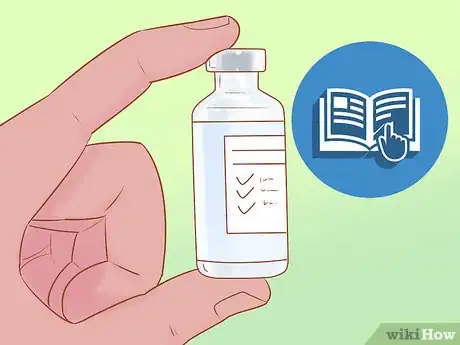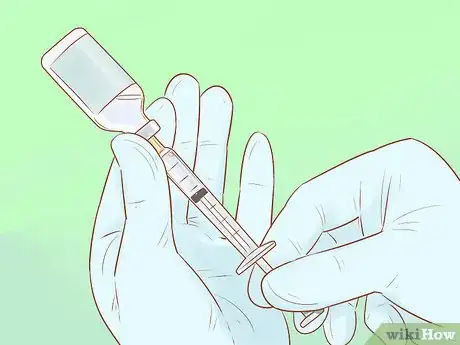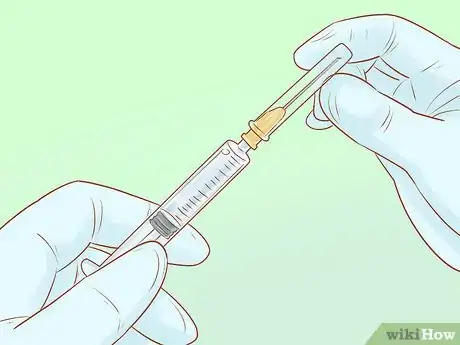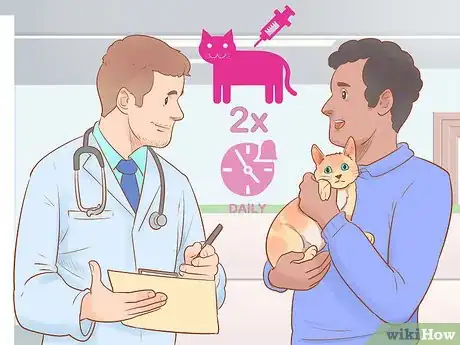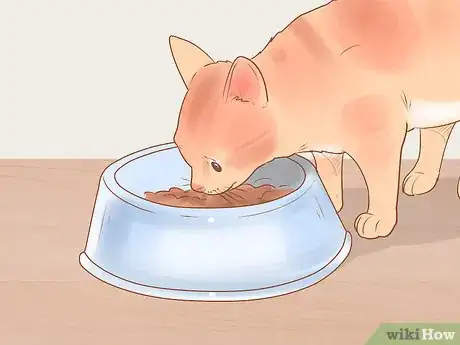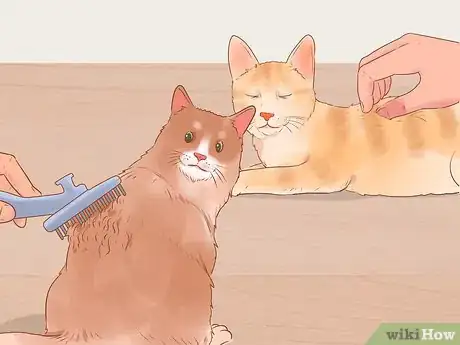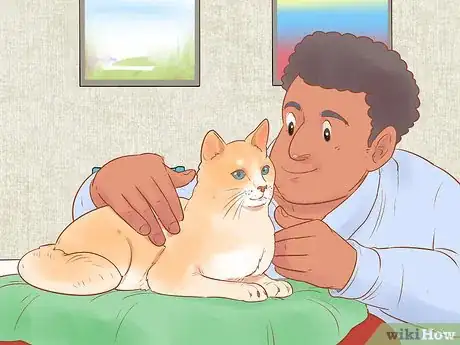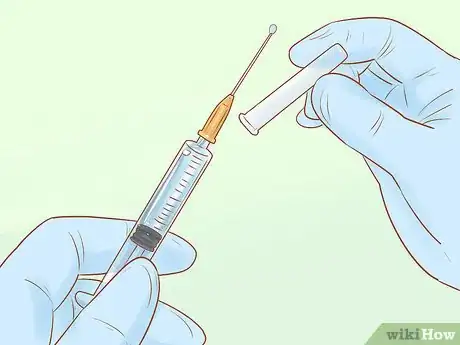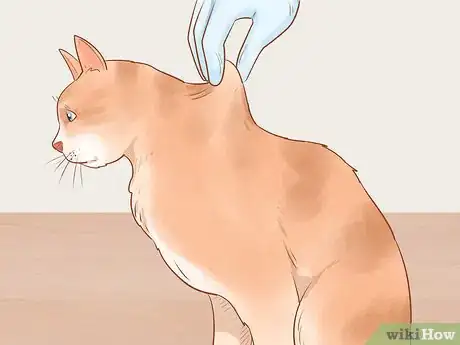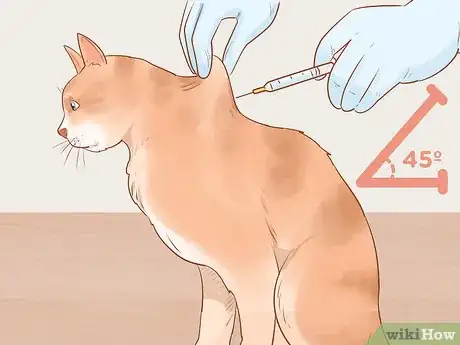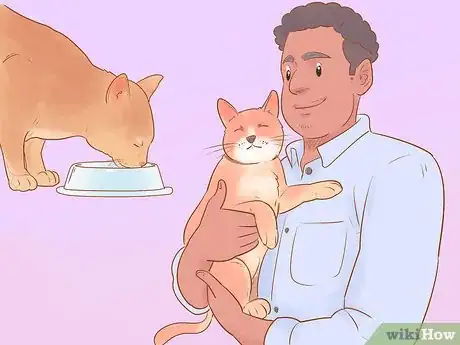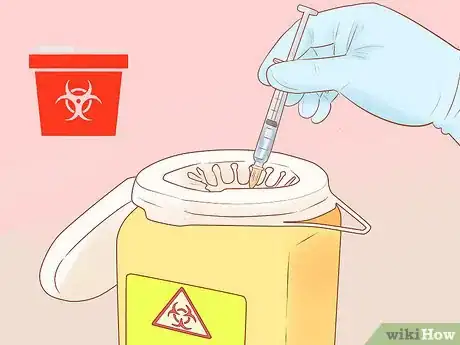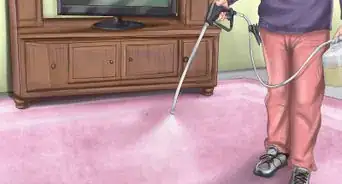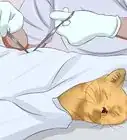This article was co-authored by Lauren Baker, DVM, PhD and by wikiHow staff writer, Megaera Lorenz, PhD. Dr. Lauren Baker is a Veterinarian and Assistant Scientist at the University of Wisconsin-Madison. With over 10 years in veterinary medicine, she specializes in the concept of “one health,” which uses insights from veterinary medicine to help human medical research. She holds a Ph.D. in Comparative Biomedical Sciences, a Doctor of Veterinary Medicine, an MS in Comparative Biomedical Sciences, and a Bachelor’s degree in Psychology from the University of Wisconsin-Madison.
wikiHow marks an article as reader-approved once it receives enough positive feedback. In this case, 94% of readers who voted found the article helpful, earning it our reader-approved status.
This article has been viewed 75,167 times.
Just like their human companions, cats can become diabetic. If your beloved feline has recently been diagnosed with diabetes, you may be feeling nervous or overwhelmed at the thought of having to administer insulin injections to your cat. Fortunately, giving insulin to a cat is not a difficult or complicated process, and is not particularly painful or unpleasant for most cats. Help your diabetic cat by learning how to store and handle insulin, develop a good injection routine, and properly administer an injection.
Steps
Storing and Handling Insulin
-
1Follow the storage instructions on the label. Your insulin will come with detailed directions on proper storage and handling. Make sure to familiarize yourself with these directions, and ask your vet if you have any questions.
-
2Refrigerate your insulin until you are ready to use it. Insulin will deteriorate and become ineffective if it is exposed to heat. It is best to store the insulin in the refrigerator door, where temperatures are the most stable.
- If the insulin appears cloudy, discolored, has been exposed to heat, or is expired, dispose of it and start with a new bottle.
Advertisement -
3Gently mix the insulin by rolling it between your hands. Roll the bottle 2 or 3 times so the contents are uniformly mixed. Never shake the insulin, as this can cause bubbles to form.[1]
-
4Insert a clean syringe needle into the top of the insulin bottle. Remove the needle guard from the end of your syringe. Turn the insulin bottle upside-down and slide the needle into the rubber stopper at the top of the bottle.[2]
-
5Fill the syringe with the correct amount of insulin. Draw back the plunger to fill the syringe with the amount of insulin indicated by your vet as the correct dosage for your cat. Push the plunger back in to shoot the insulin back into the bottle, then draw the insulin back into the syringe a second time. This will help reduce the chances of air bubbles getting into the syringe, which can make it difficult to measure the dosage accurately.[3]
- Double-check the syringe to make sure that you have the correct dosage. Your vet should provide you with clear instructions about how many units or milliliters to administer to your cat.
-
6Put the safety cap back on the syringe and set it aside. Once you have double-checked that you have the right dosage of insulin in the syringe, put away the insulin bottle in your refrigerator and place the syringe somewhere safe (e.g. on a clean kitchen counter, in your bathroom medicine cabinet, or in some other cool, stable place where it will be out of reach of pets and small children) until you are ready to administer the dosage to your cat.
- Don't leave the insulin in the syringe for too long or it could bind to the plastic.
Creating Your Injection Routine
-
1Decide on a schedule for administering the insulin. Your vet may instruct you to give your cat an injection once or twice a day. It is best to administer the injections at approximately the same time(s) every day. Insulin injections should be given immediately after the cat has eaten. This will prevent the cat's blood sugar from dropping to a dangerously low level.
-
2Allow your cat to eat a meal before administering the injection. It is best not to inject the insulin while the cat is eating, because this may cause your cat to feel nervous and unsafe during meal times. Allow the cat to finish eating undisturbed.
- Ask your vet what to do if your cat skips a meal or vomits immediately after eating. They may recommend giving the cat a reduced dosage in these situations.
-
3Soothe your cat before administering the injection. Pet or groom your cat a few times to ease anxiety, and speak to your cat in a quiet, reassuring voice. You can try offering a small, healthy treat, like a piece of cooked, unseasoned chicken, as you are preparing your cat for the injection.[4]
- If your cat tends to struggle or panic during an injection, you may wish to ask someone else to help you hold or gently distract the cat while you administer the injection.
-
4Place the cat on a level surface. If you are confident that your cat will remain calm during the injection, you might place the cat on your lap. However, there is less risk of injury to you and your cat if you place the cat on a flat, elevated surface, like a table top.[5]
Injecting the Insulin
-
1Have your syringe ready. Once you have the cat in position and ready to receive the injection, pick up the syringe that you filled with the correct dosage of insulin. Take the safety cap off the needle, and hold the syringe with your dominant hand (i.e. if you are right-handed, hold the syringe in your right hand).[6]
-
2Grasp the cat's skin with your thumb and index finger and pinch firmly. Select a small fold of skin along the cat’s back, shoulders, side of the chest, or abdomen. Gently pull the cat's skin up so it forms a tent shape.[7]
- Avoid injecting the insulin into the same site repeatedly, as this can result in scar tissue buildup or granulomas.
-
3Insert the needle into the skin at a 45° angle. Take care not to push the needle all the way through the fold of skin or into your thumb or finger where you are holding the cat’s skin. Keep your thumb on the plunger as you are inserting the needle.[8]
-
4Depress the plunger in one quick movement. Push the plunger in with your thumb, and immediately pull the needle out when you are finished.[9]
- You may wish to draw the plunger back slightly before you make the injection, to insure that you have not hit a blood vessel. If blood enters the syringe when you pull back the plunger, remove the needle and make the injection somewhere else.
- Replace the safety cap on the needle as soon as you have finished making the injection.
-
5Reward your cat. Praise your cat in a gentle voice and gently pet the cat. You may also offer the cat a small treat, like a piece of cooked chicken.
-
6Dispose of the used needle properly. Place the capped needle in a puncture-proof container. You may be able to obtain a specialized “sharps” container from your vet’s office or your local pharmacy. Ask your vet or your local waste disposal service about proper disposal procedures in your area.[10]
Warnings
- Never change your cat’s insulin dosage or stop administering insulin without consulting your vet.⧼thumbs_response⧽
- Watch for signs of a potentially life-threatening condition called hypoglycemia (low blood sugar) that can occur if your cat hasn't eaten before a shot or an incorrect dose was given. Symptoms can include changes in appetite, disorientation, weakness, tremors, or seizures.⧼thumbs_response⧽
- Take your cat to your veterinarian or emergency vet if they exhibit symptoms of hypoglycemia or other unexplained behavior.⧼thumbs_response⧽
References
- ↑ http://www.peteducation.com/article.cfm?c=1+2130&aid=258
- ↑ http://www.peteducation.com/article.cfm?c=1+2130&aid=258
- ↑ http://www.peteducation.com/article.cfm?c=1+2130&aid=258
- ↑ http://www.peteducation.com/article.cfm?c=1+2130&aid=258
- ↑ http://www.vetstreet.com/cats/administering-injectable-medication-to-your-cat
- ↑ http://www.peteducation.com/article.cfm?c=1+2130&aid=258
- ↑ http://www.peteducation.com/article.cfm?c=1+2130&aid=258
- ↑ http://www.peteducation.com/article.cfm?c=1+2130&aid=258
- ↑ http://www.peteducation.com/article.cfm?c=1+2130&aid=258
